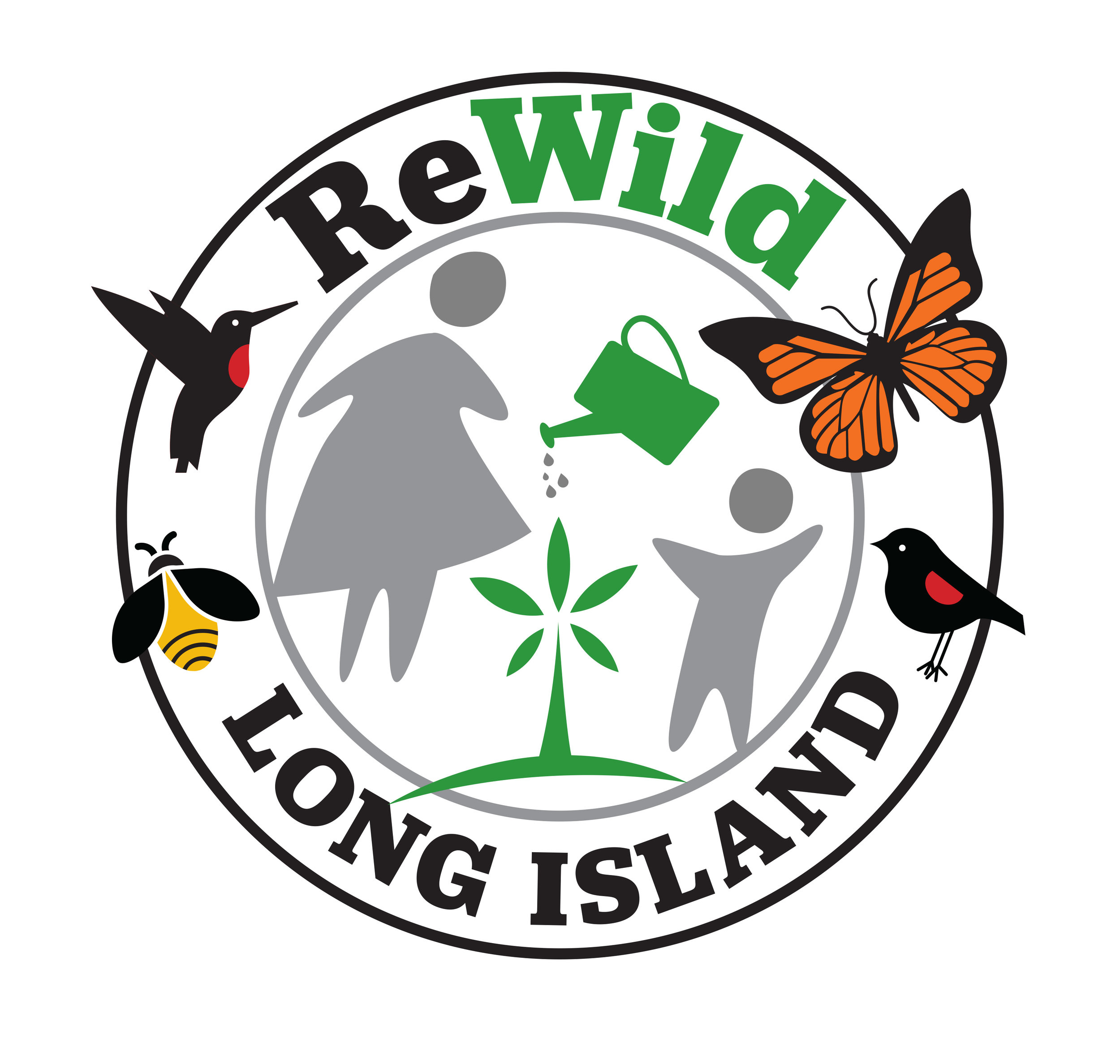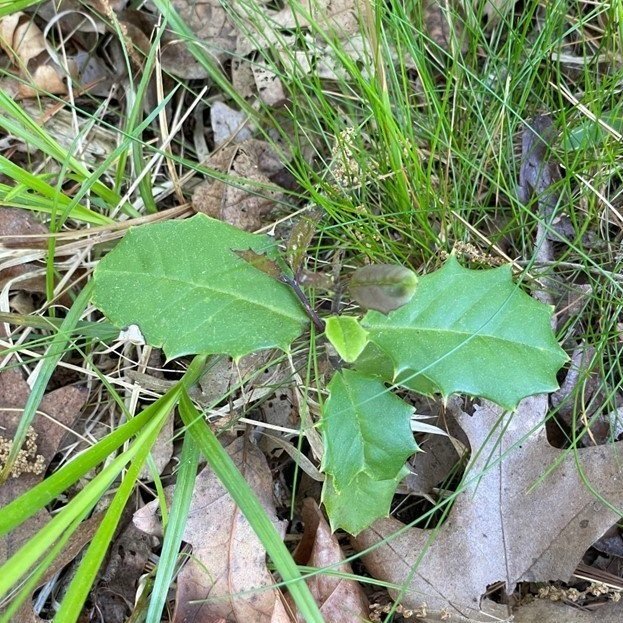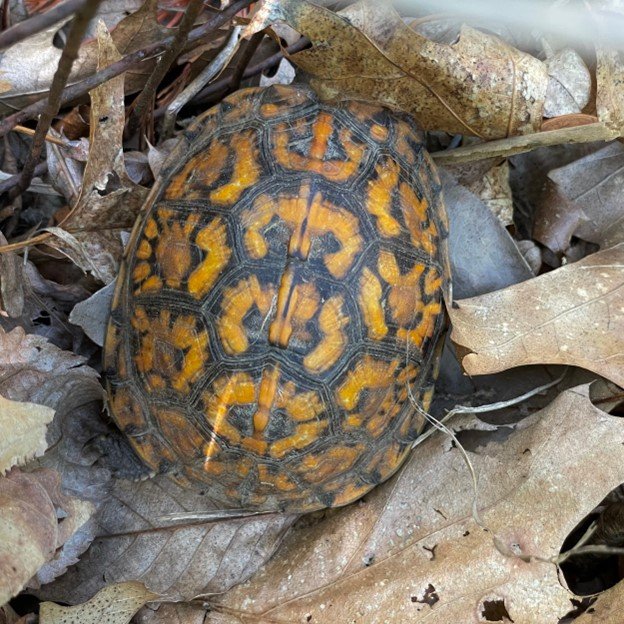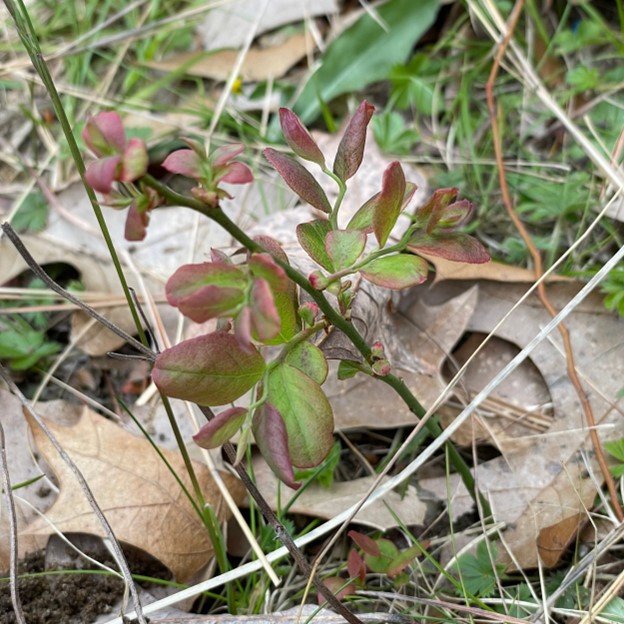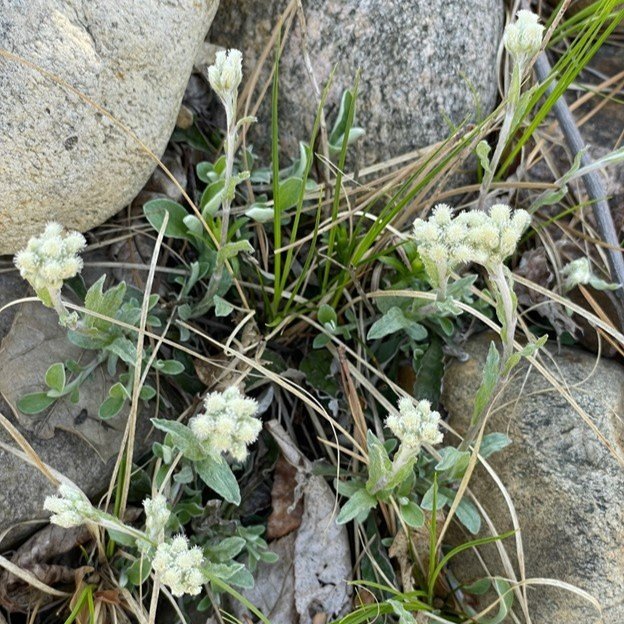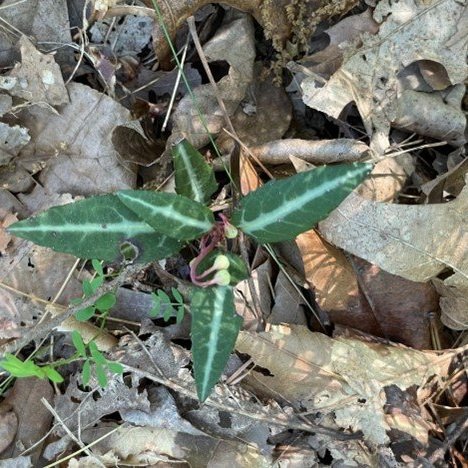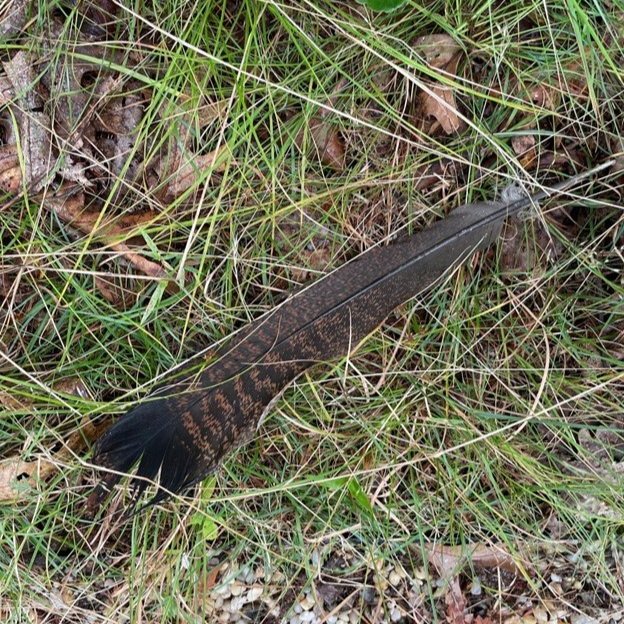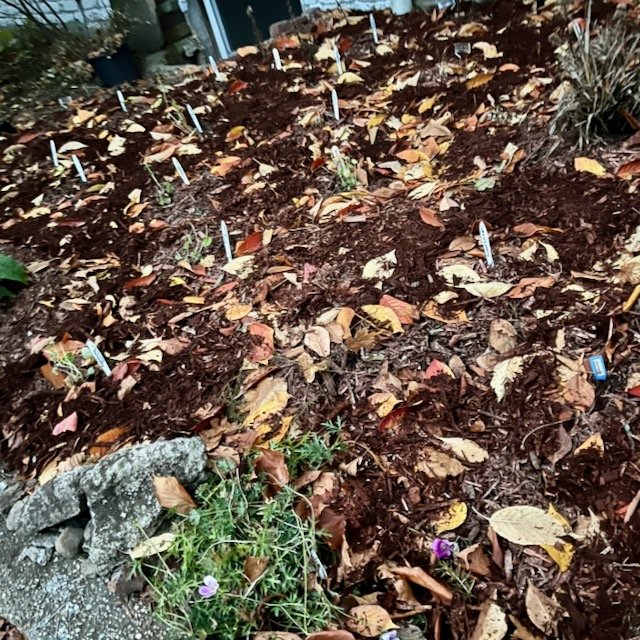Leave the Leaves Collection
CRAIG’S ELEVATOR PITCH
As a horticulturist, I spend a lot of time trying to remedy poor horticulture practices. We need to promote Leave the leaves more. It touches a lot of bases (plant nutrition, soil health, blower noise and pollution, trucking, landfill space) and when a homeowner realizes it will also save them money…Win-Win!
My elevator speech on Leave the leaves -What’s a tree's food? Last year’s leaves. So, leave the leaves. This provides root protection and nutrients for shrubs and perennials. Keep in mind that Mother Nature will also help you, probably half the leaves will decompose by Spring time. Reduce the overall chore and get the added benefit of winter protection and compost for the garden for free!
by Craig den Hartog, Horticultural Consultant
A clean path around leaf layered garden
Leave the leaves and stems
Leaves inside garden bed
I leave the leaves
Len Green, a ReWild Board Member and long-time environmentalist, highlights some reasons why he leaves the leaves.
Out on the East End, the leaves are pretty much done falling by Thanksgiving. I like to imagine that this is no coincidence. The leaves fall, giving back to the earth what has been taken. It’s a necessary cycle to keep things in balance. Look around, and you see the consequences of our falling out of balance: an unhealthy dependence on fertilizers, a polluted watershed, and a loss of the natural diversity that we need for a sustainable ecology.
So, I leave the leaves, just let them rest where they fall, unless it’s on a walkway, deck, or driveway. Over the winter, they will be habitat for fireflies and butterflies in various lifecycle stages. They will nourish the soil, and in spring, perhaps, reveal some new native wildflowers that have been waiting for me to lighten up on all the tidying, sweeping, and cutting back.
Come spring, when the temperature warms up sufficiently (10+ days above 50 degrees), I’ll rake the heavier leaf fall into the backyard woods, run my e-mower over the lighter stuff, and let it mulch in place. I’ll also add what’s left to my compost pile. The rest is up to nature.
Here are some of the native flora and fauna that have returned on their own to my yard since I began this practice. How many of them can you identify? Find Answer Key below the images.
Answer Key: In order, they are: American Holly, Eastern Box Turtle, Low Bush Blueberry, Pussy Toes, Striped Wintergreen, Trailing Arbutus, Wild Turkey Feather
Leonard’s grandparents left their Virginia farm for Long Island during the Great Migration. As a child, he helped plant and maintain their family gardens. As an English professor, Leonard taught at CUNY’s Kingsborough Community College and Cornell University. He now lives in East Hampton, where he and his wife, Nancy, have converted most of their property to native woodland, mixed meadow, and native gardens.
A committed environmental activist, Len helped establish the Friends of Sammy’s Beach, a community group that campaigned for the full restoration of the native plant community destroyed by a misguided dredging project in East Hampton. He is also a co-founder of Change Hampton, a group dedicated to promoting native gardens and sustainable landscaping practices. Change Hampton has been instrumental in installing a native pollinator garden at East Hampton Town Hall. He has served on the ReWild Board since December 2022.
leave the leaves
Duong Vu, a ReWild Board Member who enthusiastically shares her passion for her garden throughout the seasons, curated this selection of posts.
November arrived. Fall is in full swing and gloriously beautiful this year. And it seemed that this year, all the experts and major media outlets have agreed on something: Leave the Leaves!
Leaving the leaves and seed heads have brought the flurries of life to my garden. Watching life outside my windows is immensely rewarding. What I see reminded me that I am doing the right thing, and I am making progress. Our garden is the local bird’s destination.
We were fortunate to have large mature trees on our property. I have grossly underestimated how much value a mature tree can provide. In spring, the cloud of flowers feed the bees. In summer, the thick canopy of leaves provides food for caterpillars and refuge for the birds. In fall, their abundant leaves make the leaf layer underneath and nourish the soil. Their fruit laden branches provide birds with much needed sustenance in the wintertime. If you are fortunate enough to have a mature tree, please keep it. The mature trees are the favorite meeting place for our robins, red cardinals, blue jays, black cap chickadees and squirrels. The life, the sound, the endless hours I looked out the windows in awe.
With mature trees, we have leaves! I tend to leave the leaves close to where they fall. It’s easy. I rake the leaves into the garden bed right under the tree. I reused a section of garden fence and put it right next to the tree to collect the leaves. I also moved some to a nearby garden bed. It was new last fall when I created it by piling on 6-10 inches of leaves to kill the grass. This year, I piled on more leaves in areas where plants have not filled in. I have another “kill the grass” project in progress that is benefiting from a thick layer of leaves this year. The birds and squirrels are benefiting from the leaf layer, and I am happy to share.
Leaves make a soft landing for Blue Jays
A leaf corral strategically placed beneath a tree’s branches
Leaves collect around a tree
diana’s garden
Duong’s sentiment for wildlife is shared among other Long Island ReWilders.
Dianna wrote, “Since I’ve been a ReWilder for the last 3 years, I’ve so enjoyed the freedom of leaving the leaves and welcoming their benefits.
The leaves supply outstanding camouflage for wildlife, offering them protection as they forage.
I feel great joy in providing a sanctuary that supports and sustains.”
cheryl’s secret
Leaving the leaves has other benefits. Cheryl shared her secret with Duong.
“My New York and New England asters were keeping their lower leaves longer.
I realized that, for 3 years now, I have been mulching my flower beds with oak leaves. Since oak leaves are slow to break down, there is a good 3" layer protecting my plants from diseases splashing up onto the plant leaves from the soil during rain.”
Duong took her advice to heart. Oak leaves look wonderful under late blooming asters.
Thank you, Cheryl!
The Art of Raking in the Fall
Francesca Zahner is an educator, writer, baker and avid reader. She is learning to ReWild as she transforms her home garden, bit by bit, in Port Washington where she lives with her husband and four children.
It’s that time of year: Fall Cleanup. The constant drone of gas-powered leaf blowers fills the otherwise tranquil air. I hear them long before I see them.
In the quest for pristine lawns and picture-perfect properties, we are accustomed to seeing leaves as temporarily attractive but ultimately something to remove completely. To be sure, there can be a lot, and wet leaves on pavement or slate can be a hazard. Leaves covering drains create flooding and must be removed from roadways.
Yet leaves are also nature’s natural mulch. They serve several purposes including carpeting our garden beds, protecting roots and dormant plants, and providing important habitat for nesting insects seeking a warm home during the harsh winter months. These functions are vital to the health of our gardens and ecosystem.
Back when I was a new homeowner and before I knew the many benefits of leaving leaves, I was vigorously raking them out of my front hedge one day when an older gentleman walked past and amiably advised me to “be sure to leave a layer of leaves.”
Lightbulb moment! We had a brief discussion where he imparted some garden cleanup wisdom.
Wet leaves after the rain. Leaves from the path were raked onto a native garden bed.
Mulch was added around new plants after planting. Leaves from a different part of the yard were subsequently added.
In the newly-planted native garden, more mulch was added over the leaves and throughout the bed.
I did take his advice, but it was not until more recently through the ReWild movement that I learned just how important it is to leave that layer of leaves.
This season, I went one step further and raked my many leaves into my newly planted garden bed! I layered wood chip mulch over the leaves to prevent them from blowing away. The leaves will break down and become part of the bed.
Leaves left on the grass will be mown in the spring and also become part of a natural mulch. Excess leaves will be stored in paper garden waste bags and eventually utilized in the compost bins, layered into the garden, and turned into mulch in the spring.
Many homeowners no longer rake their own leaves and that is partly why we hear so many leaf blowers. At one point, we too had hired contractors to do this work for us. I learned though that I favored not only the simplicity of raking my own leaves but also the control I had over how the work was done.Further, I learned that I loved the physicality, the lovely quiet, and the therapeutic experience that the process allowed.
In addition, it gave me the opportunity to slow down and observe all manner of birds, insects, and wildlife in and around me. I was pleased to see butterflies finding my native plants and I am encouraged by the wildlife I see to continue this path of reintroducing native plants and creating healthy habitats in my little corner of the world.
Share your story about leaving the leaves! Email us at Speakers-Leads@ReWildLongIsland.org
